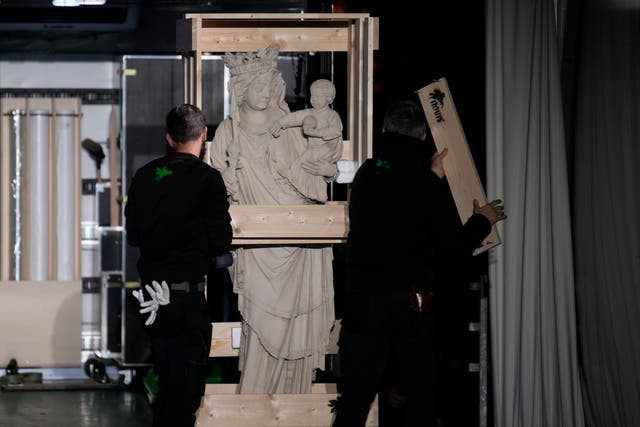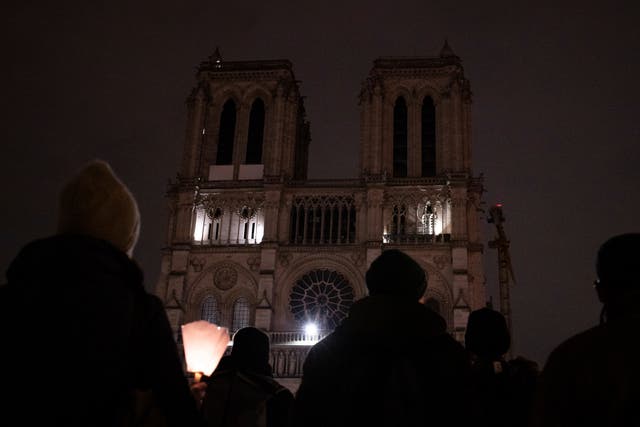
A medieval statue of the Virgin Mary and Child, known as The Virgin of Paris, has returned to Notre Dame Cathedral, five years after surviving the devastating 2019 fire that engulfed the landmark.
The nearly 6ft-tall stone sculpture, a symbol of hope and faith for Catholics in Paris and beyond, was relocated after the blaze on April 15 2019.
Miraculously intact, it earned the nickname Stabat Mater – the Standing Virgin – as a sign of resilience amid the destruction.

The statue’s return began with a torchlit procession from the forecourt of Saint-Germain-l’Auxerrois Church.
Hundreds of faithful and residents accompanied the statue along the Seine river to the cathedral’s square, where Archbishop Laurent Ulrich of Paris led a blessing ceremony.
“Tonight, as we accompany the Virgin Mary to her cathedral, before she takes her place at the pillar where so many generations have come to pray, we know she is joining the house of Christ,” Archbishop Ulrich said, bowing before the statue and blessing it with incense.
The statue, originally from the Saint-Aignan Chapel on the Ile de la Cite, dates to the mid-14th century.

Moved to Notre Dame Cathedral in 1818, it was relocated several times before finding a permanent home in 1855 against the southeast pillar of the cathedral, under the guidance of architect Eugene Viollet-le-Duc, according to a news release from the cathedral.
A vigil followed, concluding a nine-day prayer cycle that began on November 7.
The ceremony is part of the lead-up to the cathedral’s grand reopening, scheduled for December 8.
Last Thursday, the cathedral took delivery of three new bells, including one used in the Stade de France during the Paris Olympics earlier this year.

The Olympic bell, a gift from the Paris 2024 organising committee, will join two smaller bells, Chiara and Carlos, above the altar.
“We’ll be together again in a few days to open the door to Christ,” Archbishop Ulrich said during the ceremony.


Why are you making commenting on The National only available to subscribers?
We know there are thousands of National readers who want to debate, argue and go back and forth in the comments section of our stories. We’ve got the most informed readers in Scotland, asking each other the big questions about the future of our country.
Unfortunately, though, these important debates are being spoiled by a vocal minority of trolls who aren’t really interested in the issues, try to derail the conversations, register under fake names, and post vile abuse.
So that’s why we’ve decided to make the ability to comment only available to our paying subscribers. That way, all the trolls who post abuse on our website will have to pay if they want to join the debate – and risk a permanent ban from the account that they subscribe with.
The conversation will go back to what it should be about – people who care passionately about the issues, but disagree constructively on what we should do about them. Let’s get that debate started!
Callum Baird, Editor of The National
Comments: Our rules
We want our comments to be a lively and valuable part of our community - a place where readers can debate and engage with the most important local issues. The ability to comment on our stories is a privilege, not a right, however, and that privilege may be withdrawn if it is abused or misused.
Please report any comments that break our rules.
Read the rules here